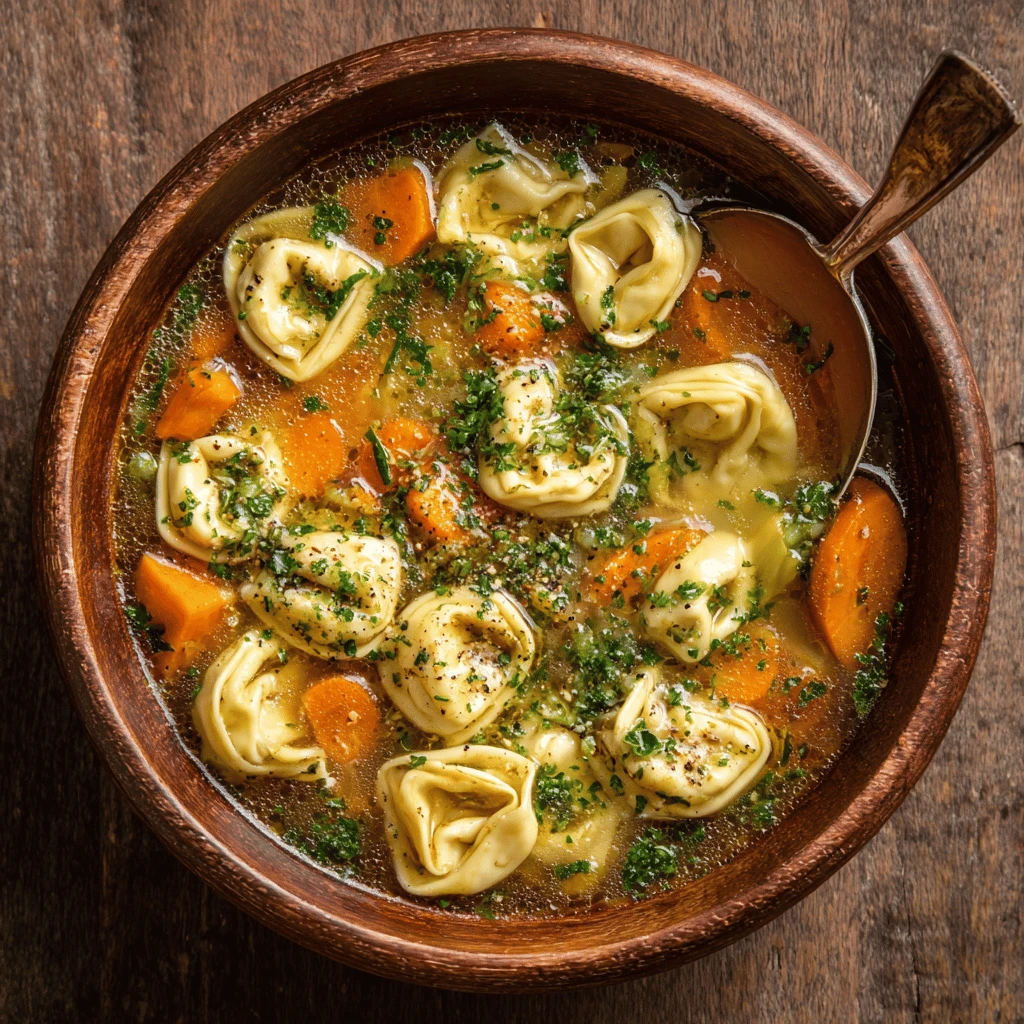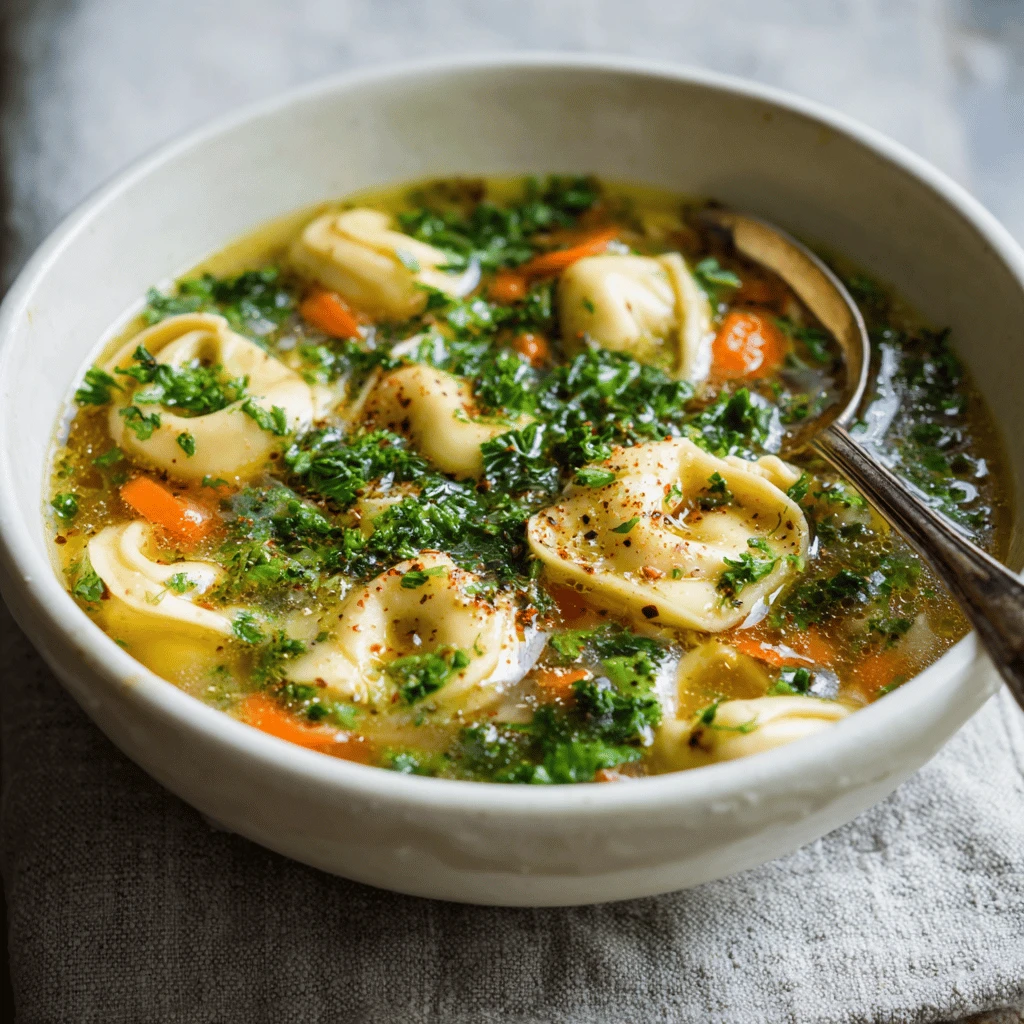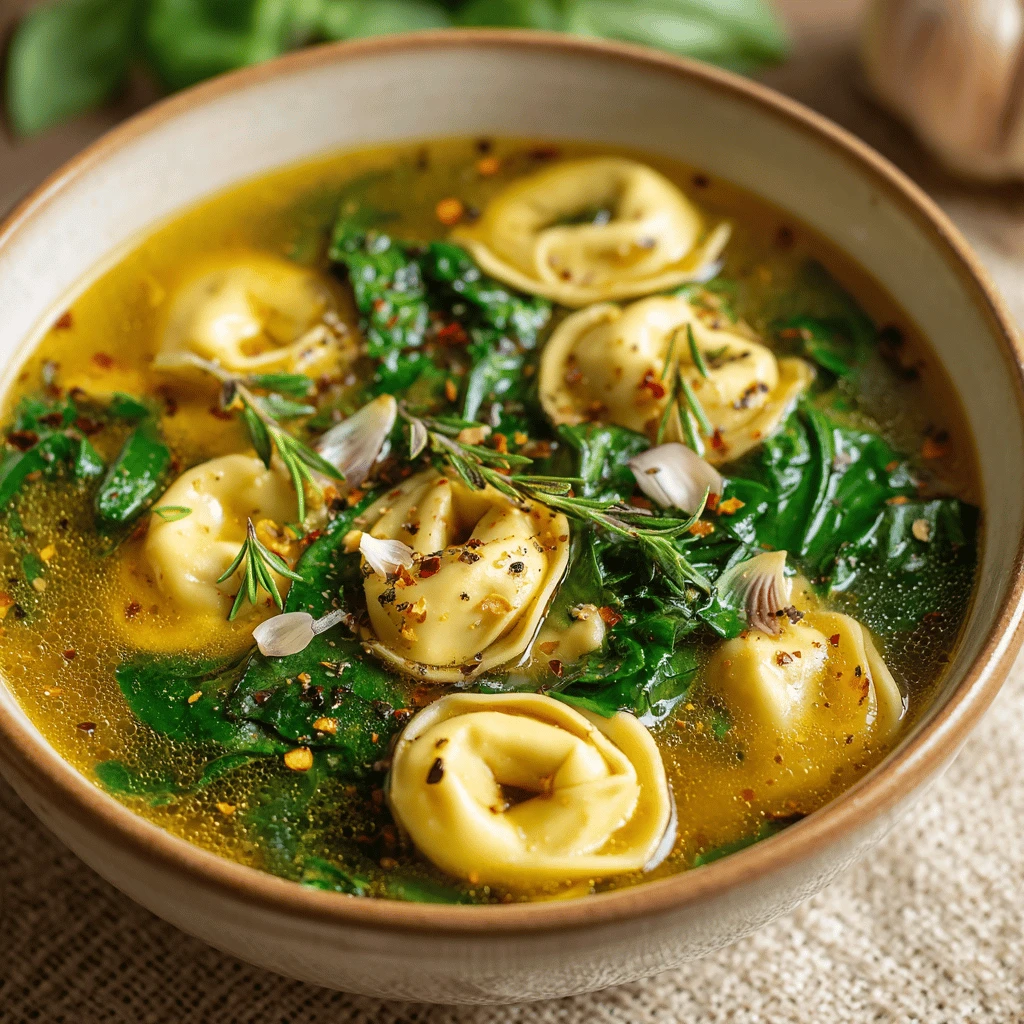Healthy Tortellini Broth
Tortellini, those delightful ring-shaped pasta pockets, are often associated with rich, creamy sauces. But did you know they can also be enjoyed in a light, nourishing broth? A healthy tortellini broth offers a comforting and flavorful alternative, perfect for a light lunch, a starter, or even when you’re feeling under the weather. This article explores the art of creating a healthy tortellini broth, providing tips, variations, and answering frequently asked questions.
Crafting the Perfect Base Broth
The foundation of any great tortellini broth is, naturally, the broth itself. Ditching pre-packaged, high-sodium options for a homemade or low-sodium alternative is the first step towards a truly healthy bowl.
Homemade Broth: Flavor and Control
Making your own broth allows you to control every ingredient and tailor the flavor to your preferences. Chicken broth is a classic choice, offering a rich, savory base. Vegetable broth is another excellent option, particularly for vegetarian or vegan variations. Bone broth, simmered for a longer period, boasts a deeper flavor and is rich in collagen and nutrients.
To make a simple chicken broth, combine chicken bones (from a roasted chicken, for example), vegetable scraps (onion peels, carrot tops, celery ends), herbs (parsley stems, thyme sprigs), and peppercorns in a large pot. Cover with water and simmer for at least 2-3 hours, or even longer for a more intense flavor. Strain the broth, discarding the solids, and you’re ready to use it.
For vegetable broth, simply omit the chicken bones and use a wider variety of vegetables, such as mushrooms, leeks, and garlic. The simmering time is generally shorter, around 1-2 hours.
Low-Sodium Store-Bought Options
If time is short, opt for low-sodium store-bought broths. Look for options with minimal additives and preservatives. Even with low-sodium versions, taste and adjust seasoning accordingly. Remember that some tortellini may already contain sodium, so starting with a lower base helps maintain a healthier balance.
Seasoning for Success
Beyond the base, the right seasonings can elevate your broth to new heights. Fresh herbs like parsley, thyme, and oregano add brightness and aroma. A squeeze of lemon juice brightens the flavors. A pinch of red pepper flakes introduces a subtle warmth. Experiment with different combinations to find your favorite profile. A bay leaf adds a depth to the broth while it simmers, but remember to remove it before serving.
Choosing Healthy Tortellini
Not all tortellini are created equal. Choosing the right type is crucial for maintaining a healthy dish.
Whole Wheat Tortellini
Opting for whole wheat tortellini is a simple way to boost the fiber content of your meal. Whole wheat pasta provides more sustained energy and helps regulate blood sugar levels compared to refined white flour pasta. Check the ingredient list to ensure that whole wheat flour is the primary ingredient.
Lean Protein Fillings
The filling inside the tortellini also plays a significant role in its nutritional value. Look for tortellini filled with lean proteins like chicken, turkey, or ricotta cheese (in moderation). Avoid options with high levels of processed meats or cheeses, which can be high in sodium and unhealthy fats.
Vegetarian & Vegan Options
For vegetarian or vegan options, choose tortellini filled with vegetables, spinach and ricotta (if vegetarian), or vegan cheese alternatives. These can be a delicious and nutritious addition to your broth. Check labels carefully to ensure they meet your dietary needs and preferences.
Portion Control
Tortellini, even healthy versions, are still a source of carbohydrates. Be mindful of portion sizes to avoid overeating. A serving size of around 1/2 cup to 1 cup of cooked tortellini per bowl of broth is generally a good guideline. Adjust based on your individual needs and activity level.
Adding Nutritious Vegetables
Adding vegetables to your tortellini broth not only enhances its flavor but also significantly increases its nutritional value.
Leafy Greens
Spinach, kale, and Swiss chard are excellent additions to tortellini broth. They are packed with vitamins, minerals, and antioxidants. Simply add them to the broth during the last few minutes of cooking so they wilt slightly without becoming overly soggy.
Root Vegetables
Carrots, celery, and parsnips add sweetness and earthiness to the broth. They can be diced and added earlier in the cooking process to soften and release their flavors. Roasting the vegetables before adding them to the broth can deepen their flavor even further.
Other Vegetables
Consider adding other vegetables like zucchini, bell peppers, mushrooms, or broccoli. Each vegetable contributes its own unique flavor and nutritional benefits. Experiment with different combinations to create a broth that suits your taste. For a richer flavor, consider adding sun-dried tomatoes to the broth.
Don’t Overcook
Be careful not to overcook the vegetables. They should be tender-crisp, retaining their texture and nutritional value. Overcooked vegetables become mushy and lose their flavor. Adding delicate vegetables like spinach towards the end of the cooking process prevents them from becoming overcooked.
Enhancing Flavor and Texture
Beyond the base broth, tortellini, and vegetables, there are several ways to enhance the flavor and texture of your dish.
Aromatic Infusions
Infusing the broth with aromatics like garlic, ginger, or lemongrass can add depth and complexity. Sauté these aromatics in a bit of olive oil before adding the broth to release their flavors. Remove them before serving if desired.
Acidic Boost
A squeeze of lemon juice, a splash of white wine vinegar, or a drizzle of balsamic glaze can brighten the flavors of the broth and add a touch of acidity. Start with a small amount and add more to taste.
Creamy Touches
While the goal is a healthy broth, a touch of creaminess can elevate the dish. A swirl of light cream, coconut milk, or a dollop of Greek yogurt can add richness and texture without adding excessive calories or fat.
Textural Contrasts
Add textural contrasts to your broth by including ingredients like toasted nuts, crispy croutons, or a sprinkle of grated Parmesan cheese. These elements add interest and make the dish more satisfying.
Fresh Herbs as Garnishes
Garnish your tortellini broth with fresh herbs like chopped parsley, basil, or chives. These herbs add a burst of freshness and visual appeal. A sprinkle of red pepper flakes can also add a touch of heat.
Variations and Serving Suggestions
The beauty of tortellini broth lies in its versatility. Here are a few variations and serving suggestions to inspire you.
Italian-Inspired Tortellini Broth
Combine chicken broth, diced tomatoes, spinach, and Parmesan cheese for a classic Italian flavor. Add a pinch of Italian seasoning for extra aroma.
Asian-Inspired Tortellini Broth
Use vegetable broth, shiitake mushrooms, bok choy, and a splash of soy sauce for an Asian-inspired twist. Add a touch of grated ginger and sesame oil for added flavor.
Lemon Chicken Tortellini Broth
Combine chicken broth, lemon juice, shredded chicken, and dill for a light and refreshing broth. Add a pinch of red pepper flakes for a touch of heat.
Serving Suggestions
Serve your tortellini broth hot in a bowl with a side of crusty bread for dipping. Garnish with fresh herbs and a sprinkle of Parmesan cheese. For a heartier meal, add grilled chicken or shrimp to the broth. You can also serve it as a starter before a main course.
Tortellini broth can also be prepared ahead of time and stored in the refrigerator for up to 3 days. Reheat gently before serving. For longer storage, freeze the broth in individual portions.
FAQ Section
Can I use frozen tortellini?
Yes, frozen tortellini works well in broth. Add them directly to the simmering broth and cook until they are heated through.
How can I make this broth vegan?
Use vegetable broth and vegan tortellini. Ensure that any added ingredients, such as cheese alternatives, are also vegan.
Is tortellini broth good for a cold?
Yes, tortellini broth can be soothing and nourishing when you have a cold. The warm broth helps to clear congestion, and the nutrients in the vegetables and broth support your immune system.
How can I reduce the sodium content?
Use low-sodium broth, avoid adding extra salt, and choose low-sodium tortellini. Rinsing the tortellini before adding them to the broth can also help to reduce the sodium content.
Can I add other types of pasta?
Yes, you can add other small pasta shapes to the broth if you like. Orzo, ditalini, and stelline are all good options.
Can I make this in a slow cooker?
Yes, you can make tortellini broth in a slow cooker. Combine all the ingredients in the slow cooker and cook on low for 6-8 hours or on high for 3-4 hours. Add the tortellini during the last 30 minutes of cooking.
Can I add beans to the broth?
Yes, adding beans like cannellini or great northern beans is an excellent way to add protein and fiber to your tortellini broth.
Can I freeze tortellini broth?
Yes, tortellini broth freezes well. Cool the broth completely before transferring it to freezer-safe containers or bags. Thaw overnight in the refrigerator before reheating.




